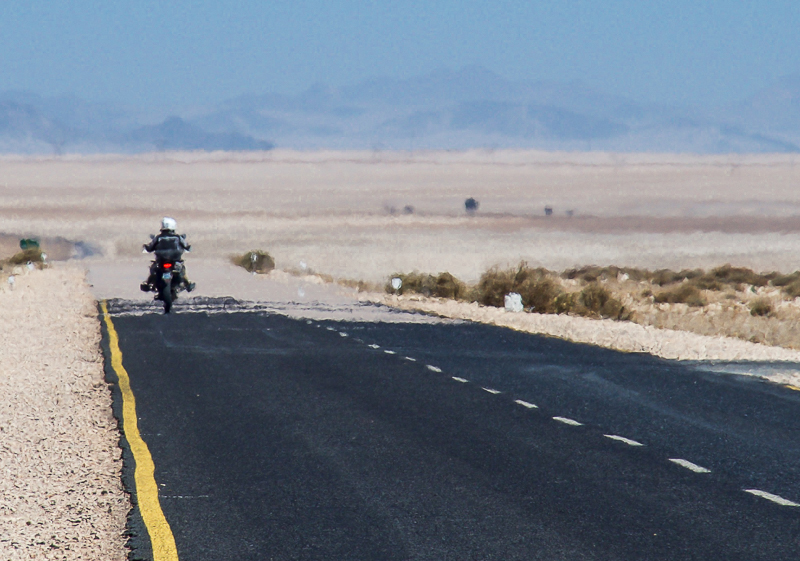Hydration is crucial to the human body. We all know what it feels like to be parched after a long day in the sun exerting ourselves, and it’s not a feeling we can ignore. Maybe some of you, like me, have even suffered heat exhaustion or heat stroke—a life-threatening situation that can be avoided by the simple act of drinking water. But aside from hydrating for the obvious reasons, why are fluids so vital for us?
Water does more than just quench thirst—it keeps joints lubricated, flushes out toxins and prevents infection, regulates body temperature, brings nutrients to cells and organs, aids in clearer thinking, improves moods, and even helps us sleep better.
I was shocked at how much water I drank every day riding through blazing-hot Central America a few years ago—two gallons (eight liters). And that was just drinking from a water bladder I kept in my pannier and had to stop and sip from. If I’d had a hydration pack, I might have consumed even more. My body needed liquids more than ever. No doubt I’d be long dead without that hydration helping me function.
The ideal amount of water for the average person just going through a daily routine is 11 8-ounce cups (.7 gallons/2.5 liters) for women and 16 (1 gallon/3.5 liters) for men. If that sounds like a lot, you can relax knowing experts say your hydration can come from other liquid sources, too, like tea and coffee. You can also flavor your water with lemon, lime, or cucumbers. Coconut water is an excellent thirst quencher that has the added benefit of natural electrolytes. Keep in mind “vitamin” water, juice, and energy drinks are loaded with sugar. And sorry, but beer, wine, or any type of alcohol will dehydrate you in the long run. If an ice-cold beer is the first thing on your mind when you get off your bike after a long day, at least pound a glass of water beforehand.

Coconut water is a great way to hydrate with natural electrolytes.
For this article, I’m going to concentrate on water alone, although it doesn’t hurt to read up on why electrolytes are also important while out sporting.
We know the importance of staying hydrated, but how do we make it easier while riding? If you’re like my husband and hate frequent stops, a hydration pack is perhaps the only way you’ll hydrate without interrupting your ride. If you’re like me and ride with an un-stopping partner or drink a lot of water just standing still, hydration packs are a godsend. I use mine for backcountry skiing, bike packing, and hiking, too.

Dave trying to stay cool on a 108°F day in Namibia.
There are a few ways to carry hydration on a bike, but external backpacks, discussed in this article, are most common. However, you can buy riding jackets with built-in hydration packs, too. Another method, if you don’t like weight on your back or shoulders, is strapping the bladder or pack onto your bike somewhere. But with the point being to have easy access to water, placing it on a luggage rack or in a pannier is not ideal. You may want to look for tank bags that can hold a water bladder.
A few things to keep in mind with your hydration system:
Consider whether you want to wear the hydration pack or strap it on your bike.
If you ride mostly off-pavement, choose something that stays put on your back or bike.
Although we all sweat, excessive perspiration can lead to severe dehydration. Make sure the pack you choose breathes well if you’re wearing it.
If you use head and neck protection, make sure the pack and brace are compatible together.
More tips:
Do not use anything but water in the bladder unless you want to replace them frequently.
Sugars from energy drinks or electrolytes will fast-track you to molding in the tube and tube components.
Always dry out the tube and bladder after every use to avoid mildew build-up.
Look for BPA-free bladders and drinking tubes, so you’re not tasting plastic.
Invest in a cleaning kit. (Kits can be bladder-specific, so look for a kit from the brand you buy.)
The greatest advantage to a hydration backpack versus a riding jacket with one inside is its multipurpose use for other sports like snowmobiling, moto racing, and almost every outdoor excursion like running, hiking, and biking.
Now let’s look at hydration pack options.
1. Stealth Angel HP Hydration Backpack $40
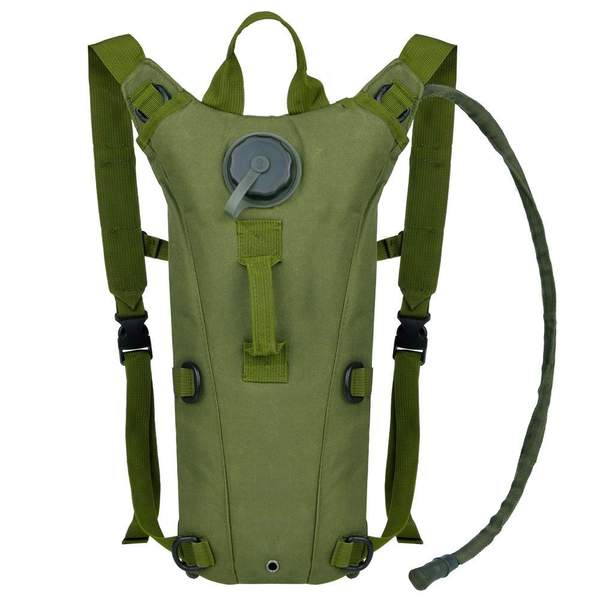
Abrasion-resistant military-grade pack available in nine natural-looking colors and patterns.
Specs:
.8-gallon/3-liter bladder
17 inches long x 7.1 inches wide x 2.5 inches deep
Rugged 800D nylon construction available in nine colors
Sturdy buckles and hand straps
Detachable cover and water inlet
Guaranteed leakproof
Screw top water inlet
Hydration hose as long as 39.4 inches
2. Camelbak HydroBak Hydration Pack $50
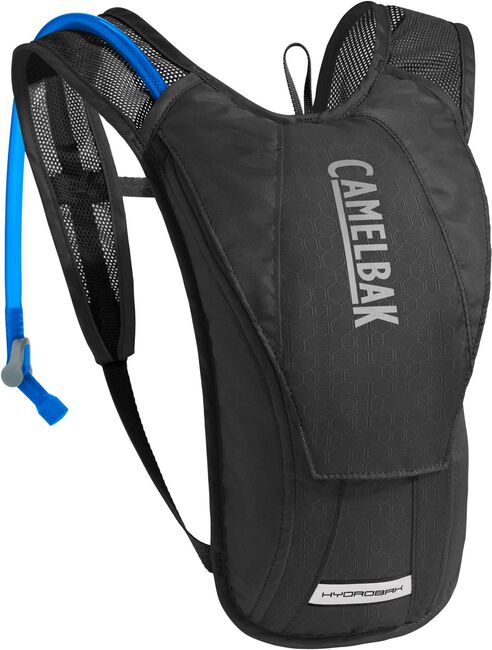
For when all you want to carry is water, keys, and a snack.
Specs:
Bladder capacity not clear on website
50 ounces/3 pounds
12.6 inches long x 8.5 inches wide x 3.9 inches deep
20 percent more water per sip compared to other hydration packs
Breathable mesh back panel, ventilated mesh harness
Secure zippered pockets
3. EVOC CC 3L Race Backpack $75

Lightweight, multi-use racing pack for fast sports enthusiasts.
Specs:
.5-gallon/2-liter bladder
17.7 inches long x 7.9 inches wide x 1.6 inches deep
1 pound, 2.7 ounces (without water)
Comfortable Air Tune back system and extra-wide hip belt wings
Pockets are easily accessible for grabbing snacks
Ripstop nylon construction can take a beating
4. Klim Quench Pak $80
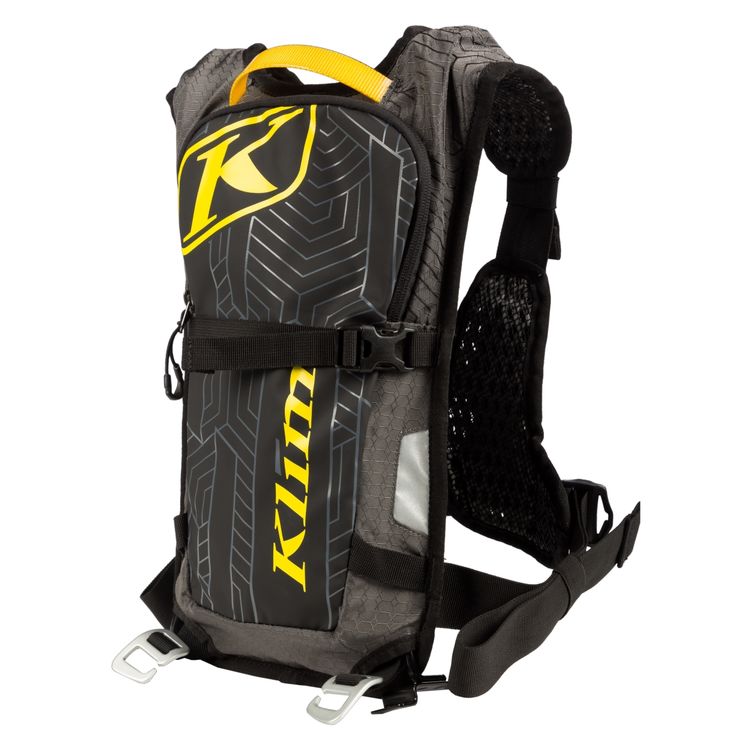
Lightweight hydration pack that includes an emergency whistle and mesh pocket for snacks.
Specs:
.4-gallon/1.5-liter or .5-gallon/2-liter bladder
15 inches long x 9 inches wide x 1.5 inches deep
Klim harness system
EVA molded backpad
Bite valve retention clip
Ventilated foam
Can attach Klim Tool Pak (sold separately)
YKK heavy-duty zippers
5. USWE Bounce-free Packs $90-250
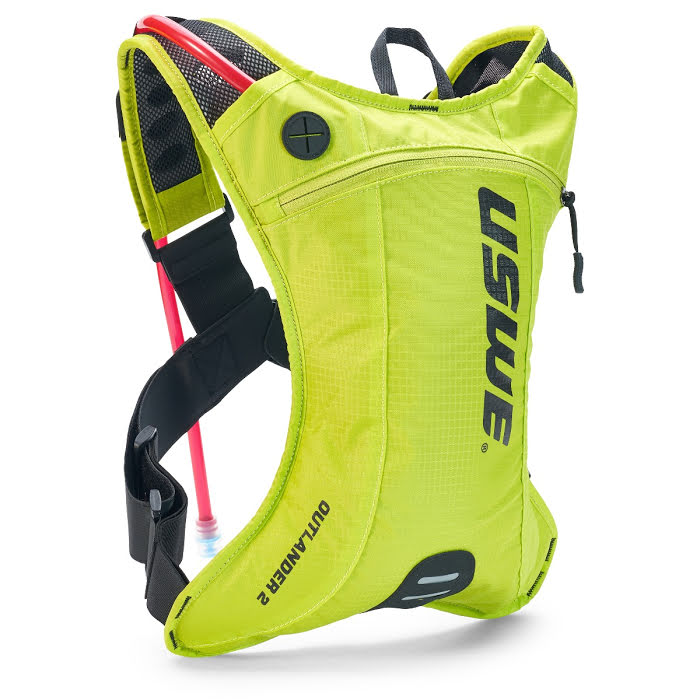
Below, I’ve chosen one of USWE’s least expensive, lower-profile packs, though there are many options on their site. Be sure to set filters to moto, enduro, dual-sport, ADV motorcycle, and off-road for the best selection.
Specs:
.4-gallon/1.5-liter bladder with big slide opening
Bladder fully reversible for easy cleaning/drying
14 inches long x 7 inches wide x 4.5 inches deep
10 ounces/.625 pounds (without water)
Award-winning NDM four-point harness for bounce-free action
Stretch harness for freedom to move and breathe
Also ideal for running, mountain biking, and skiing
Clip for drinking tube to stay in place
Mesh back panel
Water-resistant phone pocket
Compatible with action camera harnesses
6. OGIO Baja Hydration Pack $120
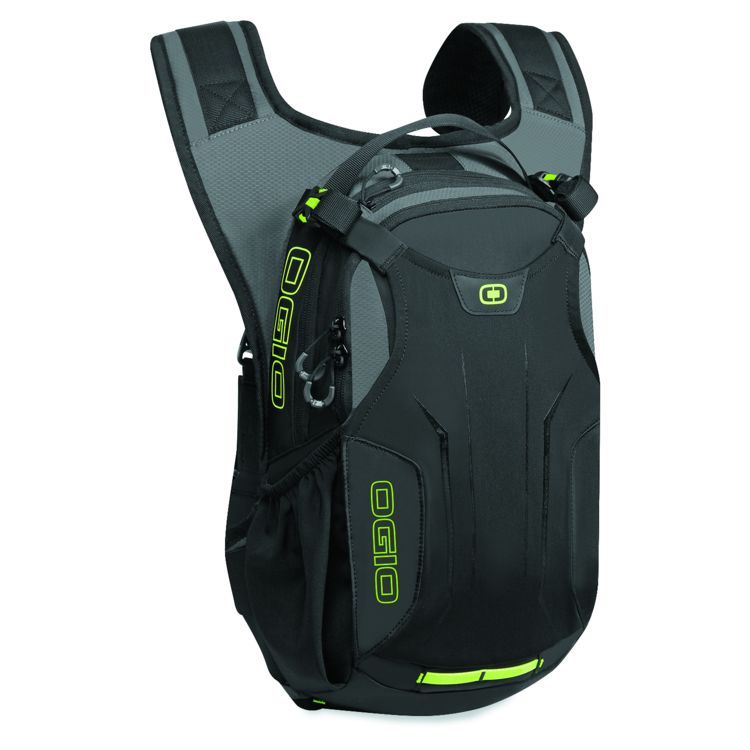
Great medium-sized pack with enough storage room for longer days.
Specs:
.5-gallon/2-liter bladder
2 gallons/8 liters of overall storage
16.25 inches long x 10 inches wide x 5 inches deep
150D-TPE-backed mini-honeycomb ripstop construction
Fully adjustable chest harness system
Has a stretch pouch for holding a helmet
Pocket has clip for keys
7. Leatt Hydration DBX Enduro Lite WP $170
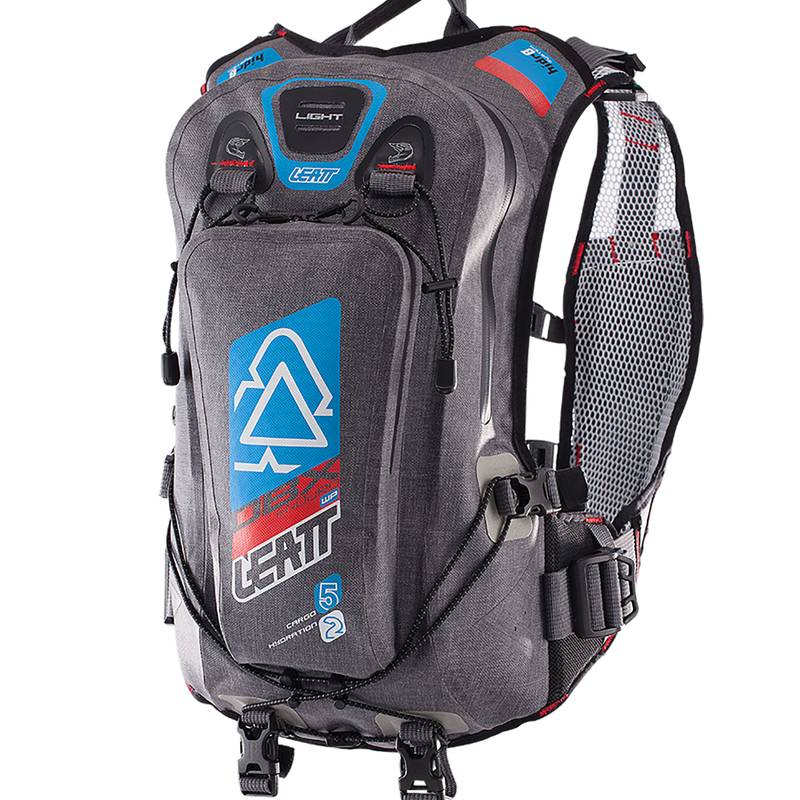
Ingeniously, Leatt included a back protector in this waist-belt-less hydration pack.
Specs:
.5-gallon/2-liter bladder
1.3 gallons/5 liters of cargo space
Waterproof with Level 1 back protector included
Chest harness and shoulder adjuster system provides non-bump fit without the need for a waist belt
Several storage pockets, including mobile phone pouch with touchscreen function
CleanTech bladder has four-way tube routing for under the arm or over the shoulder
Heat reflective inner back panel to keep liquid cool or hot
How do you stay hydrated? Let us know in the comments below.
Our No Compromise Clause: We carefully screen all contributors to make sure they are independent and impartial. We never have and never will accept advertorial, and we do not allow advertising to influence our product or destination reviews.


